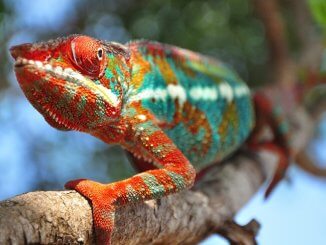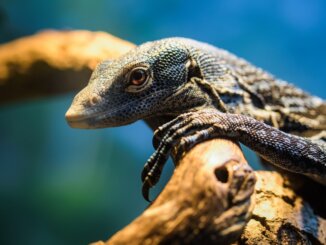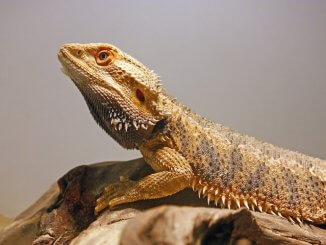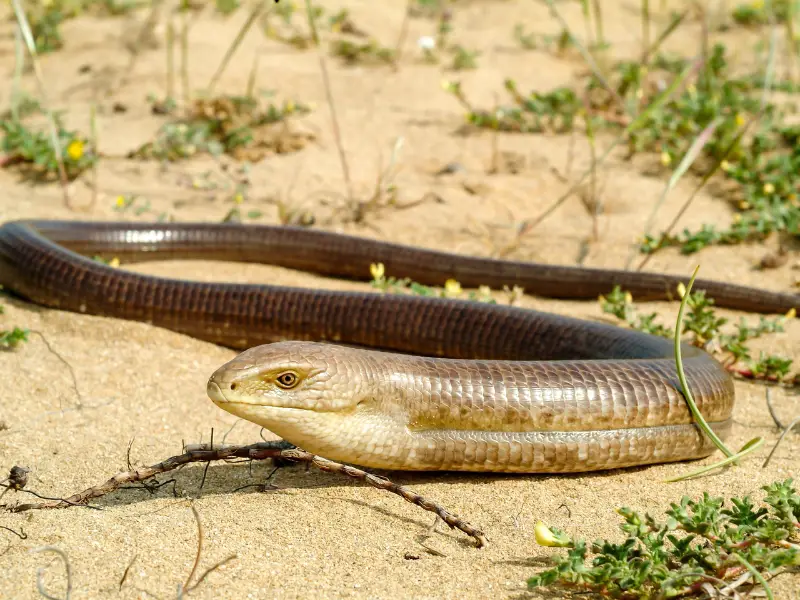
Originating from Southern Europe, the Middle East, and Central Asia, the sheltopusik is a relatively easy-to-care-for lizard.
Although often mistaken for snakes, there’s more to these unique lizards than meets the eye.
Sheltopusiks have small, barely visible legs, external ears, eyelids, and a lateral groove along each side of the body.
They’re typically a pale-tan color with a paler yellow underbelly.
The sheltopusik is one of the most underrated reptiles. While they don’t generally like to be handled, they can get used to it over time.
They enjoy stimulating environments and are quite active lizards, making them a joy to observe.
This article will discuss the key care elements to make sure your sheltopusik lives a full and healthy life.
Sheltopusik Overview
| Common name | Sheltopusik, Pallas's glass lizard, European legless lizard, European glass lizard) |
| Scientific name | Pseudopus apodus |
| Natural habitat | Lives in short grassland or sparsely wooded hills. Originates from Southern Europe to Central Asia. |
| Adult size | 4’4’’ long (135cm) |
| Average lifespan | Approximately 50 years |
| Diet | Carnivore - Eats arthropods and small mammals, such as snails and slugs. |
| Housing | Large enclosure (minimum of 48” L x 24” W x 24” H) |
| Experience | Intermediate |
Origin
The sheltopusik (Pseudopus apodus) originates from Southern Europe, the Middle East, and Central Asia.
They are found in many countries including Afghanistan, Albania, Armenia, Azerbaijan, Bosnia and Herzegovina, Bulgaria, Croatia, Georgia, Greece, Iran, Iraq, Israel, Jordan, Kazakhstan, Kyrgyzstan, Lebanon, Montenegro, Macedonia, Russia, Syria, Tajikistan, Turkey, Turkmenistan, Ukraine, and Uzbekistan.
The sheltopusik is not an endangered species and is classified as LC (Least Concern). They thrive in open country habitats such as short grassland, sparsely wooded hills, vegetated rocky slopes, foothills, river valleys, and shrubs.
Appearance And Behavior
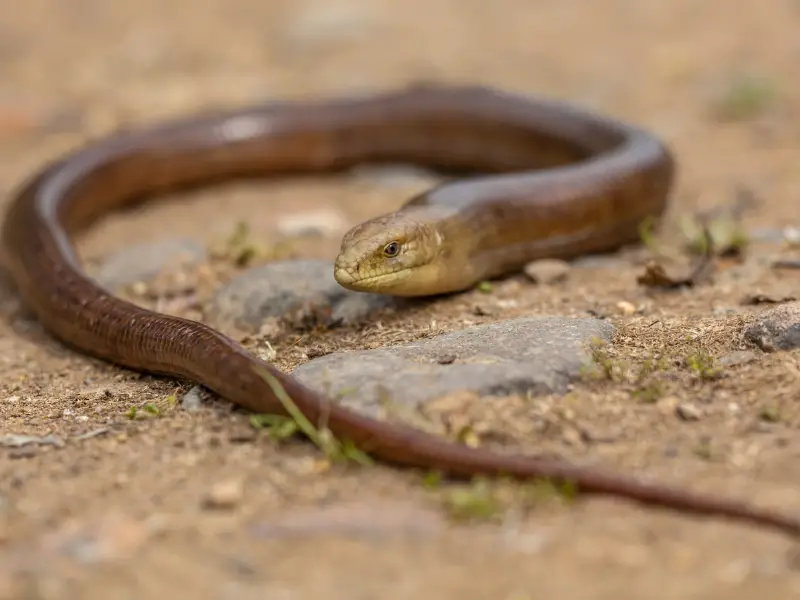
These unique lizards have a ring-like/segmented appearance. They have tiny legs (2mm) that are sometimes visible near the cloaca but are difficult to spot.
Because of this, sheltopusiks are often mistaken for snakes, but these lizards are distinguishable by their ears, eyelids, and ventral scales.
Sheltopusiks range from a light tan color to dark brown. Some have an orange or red hue and occasionally they have a light-speckled pattern. They are paler on the ventral surface and head.
It’s remarkably challenging for the average person to differentiate between males and females. Mature males tend to have a broader head than females and the area below the cloaca is fuller. However, place of origin and age need to be taken into consideration.
Size and Lifespan
A sheltopusik adult can grow over 4ft (up to 135cm long) and the average life span is 20-30 years. With the right care, they can live over 50 years though!
Temperament
As with humans, each sheltopusik is unique and has a different temperament. Generally speaking, they’re happy in their own company and generally prefer to be left alone.
The sheltopusik is diurnal, which means it is active during the daytime.
In comparison to similar reptiles, they are less likely to display caudal autonomy (dropping of the tail) when startled. If this does occur, the tail grows back slowly and is usually shorter and darker than it was previously.
It’s recommended to keep only one sheltopusik at a time. Females might be okay together, but it’s common for sheltopusik (especially males) to fight and injure one another.
Handling a sheltopusik can sometimes be stressful for them. It’s possible to handle them, although displays of protest are common. They usually don’t bite, but it never hurts to be cautious.
They are generally wild-caught and it’s rare to find one that has been captive-bred. However, they do adapt well to captivity.
Housing A Sheltopusik
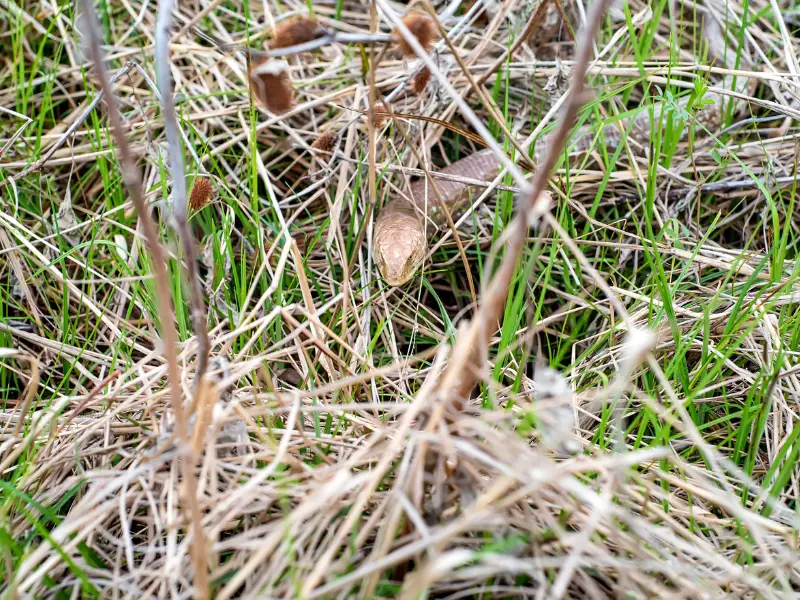
Because the sheltopusik originates from warm, bright, and dry climates, you should incorporate this into their terrarium.
Soft, moisture-retaining substrates are best for this type of lizard.
Let’s have a look at some of the specific housing requirements your sheltopusik will need.
Enclosure size
It’s important to make sure your sheltopusik has enough space to fully stretch out, explore and engage in its natural behaviors. They prefer wider as opposed to taller terrains.
The recommended enclosure size is 48” L x 24” W x 24” H. Generally, the bigger the better rule applies here.
Lighting
Sheltopusik lizards originate from warm climates. That means a good UVB light is necessary for good health for your sheltopusik.
To make sure you have the correct UVB strength you need to measure the UV index. Remember to consider distance, equipment, and obstructions. You can use a Solarmeter 6.5 to determine the best placement.
The sheltopusik lizard is stimulated by light, so if you find the UVB light is not bright enough for them (and it’s usually not), add in a 6500K T5 fluorescent light or an LED lamp.
You should turn off the lights at night to maintain a 12/12 day/night cycle. It’s recommended to adjust this cycle seasonally to promote natural hormonal rhythms.
The best way to achieve this is by syncing the lights with local sunrise and sunset hours.
Temperature and Humidity
Like other reptiles, sheltopusiks are cold-blooded, which means their body temperature is not automatically regulated.
They need to move between different temperatures to regulate it.
It’s best to have two separate areas for your sheltopusik to go between. A warm, dry side where the sheltopusik can bask in the heat, and a colder, wet side.
You need to maintain a separate nighttime temperature, too.
Here are the suggested temperatures for each condition:
- Basking area temperature: 90-95°F (32-35°C)
- Ambient temperature: 75-82°F (24-28°C)
- Nighttime temperature: 60-72°F (16-22°C)
Two 70w halogen heat bulbs placed at one side should be sufficient for creating the perfect conditions for your sheltopusik. To measure the temperatures of each side, you can use two digital probe thermometers.
If the temperature gets too hot, add a lamp dimmer to reduce the heat. If it gets too cold, simply add another lamp to increase the temperature.
Sheltopusiks thrive in dry environments, but they must get enough moisture too.
Each morning, lightly spray their enclosure or invest in an automatic misting system, allowing the top layer of their substrate to dampen.
On average, you should aim for an average humidity level of 40-60% during the day and an average of 60-80% humidity at night.
This will help your pet to shed its skin easily. You can monitor the humidity levels with a digital probe.
Substrate And Decoration
A well-draining, naturalistic substrate similar to the sheltopusik’s natural environment should be used in your lizard’s enclosure.
You can make your own substrate by combining 60% topsoil and 40% play sand or you can purchase store-bought substrate.
It’s important to provide an engaging and stimulating environment for your sheltopusik to promote healthy well-being.
You might add cork logs, cork flats, thick branches, ledges, artificial plants, and live plants so your sheltopusik can get regular exercise.
Hideouts are an excellent thing to incorporate so sheltopusiks feel safe while sleeping.
Cleaning
The substrate should be at least 6” deep to allow successful burrowing and it’s advisable to change it every 3-6 months (depending on how often you clean it and how diligent you are).
Remove droppings daily as well as any contaminated substrate, which you then need to replace.
Sheltopusik Care
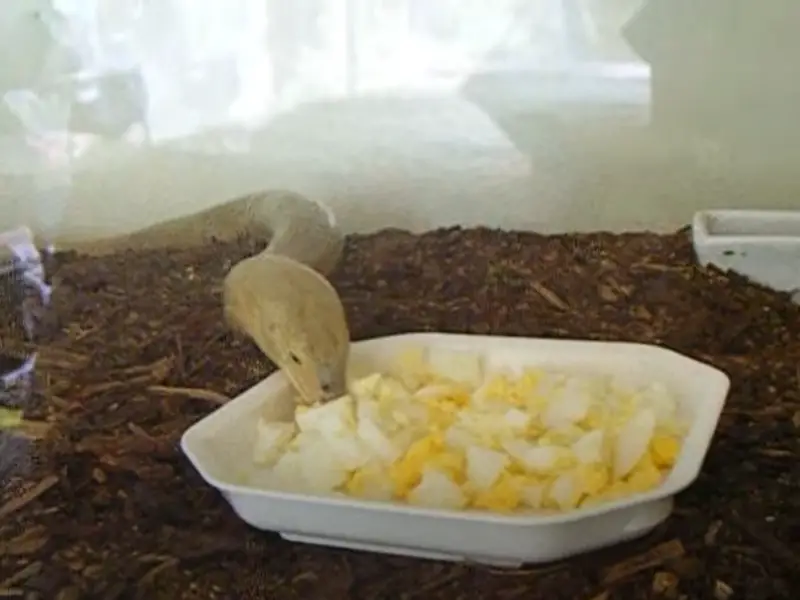
The main care requirement for the sheltopusik lizard is to create the perfect living conditions.
By maintaining warm and cool areas in their enclosure, ensuring enough light, and feeding them correctly, your sheltopusik can live a long life.
Food and Water
An adult sheltopusik eats 2-3 times a week and juveniles eat every other day. To avoid overeating and obesity, don’t give them any more than they could eat in about 5-8 minutes.
They love to eat invertebrates, small birds and mammals, smaller lizards, and eggs. You should aim for a 60% invertebrate and 40% vertebrates and eggs diet.
Place food in a shallow bowl so they don’t accidentally eat the substrate and clean away any leftovers.
The most important thing is to provide a balanced diet for your sheltopusik.
Here are a few suggested foods:
Invertebrate options: crickets, mealworms, superworms, hornworms, silkworms, grasshoppers/locusts, and snails.
Vertebrate options: young mice, young rats, young hamsters, house geckos, anoles, quail, chicks, chicken eggs, and quail eggs.
Every day, replenish a large yet shallow bowl of fresh, clean water, making sure the bowl is cleaned with a safe disinfectant every week.
You will also need to give your sheltopusik calcium and vitamin supplements to avoid deficiencies.
Calcium is very important for many reptile species – including these glass lizards. You can lightly dust the calcium supplement onto the feeder insects.
Handling
Once you’ve brought your brand new sheltopusik home, you’re probably excited to play with it. However, it’s advisable to wait around two weeks so that your pet can settle into his new home.
Like most other reptiles, the sheltopusik doesn’t like being handled very much and often shows displays of protest. They’ll attempt to get free by spinning around, lunging, and hissing.
If they experience extreme stress, they may display caudal autonomy, although this is rare.
When a lizard displays caudal autonomy, they drop its tail which then breaks into tiny pieces which resemble shattered glass. This is why this lizard family is often referred to as Glass Lizards.
If your sheltopusik needs to be handled (for example, when you clean its enclosure), hold it in the middle of its body.
That way, they’ll attempt to spin but won’t be able to get a grip. This will make the sheltopusik calm down so you can hold them.
You should not chase it around its cage or attempt to pick it up by its tail. There is a low chance of being bitten, although it always pays to be careful.
Over time, they do become rather responsive to humans, especially the ones who are feeding them!
However, they are an active lizard species so they are a lot of fun to simply observe.
Common Health Issues
Maintaining proper light, humidity, and temperature levels can help you to prevent and avoid common health issues in your sheltopusik. However, the most common issue you may face with your pet sheltopusik is when it doesn’t shed its skin properly.
Abnormal skin shedding is a common health problem with many reptiles. In cases where the skin hasn’t shed properly, it may lead to tissue death, loss of toes, and loss of parts of the tail.
Luckily, more often than not you can treat this problem at home. To avoid complications, bathe the sheltopusik in warm water for 10-15 minutes then gently rub away the excess skin.
If the skin over the eyes has not shed, apply an artificial tear ointment on the skin and leave for 10 minutes. Then gently remove the unshed skin.
Hibernation
Your sheltopusik should hibernate from October to March with a transition of a month on either side of this period.
For successful hibernation, ensure there is complete darkness and the temperature is 46-50°F (8-10°C).
Breeding
Females reach sexual maturity around 2-3 years old. In the wild, males will search for females to mate with. After mating, the male will leave and play no further role.
About 10 weeks after mating, the female lays around 8 eggs. After 45-55 days the eggs will hatch. The offspring will be 15cm long and will begin eating after 4 days.
Choosing And Buying A Sheltopusik
Buying a sheltopusik will set you back around $80 – $150, although this varies according to location.
Remember, you should always buy reptiles from a high-quality, reputable breeder or pet shop. Otherwise, you risk getting an unhealthy lizard. You can ask for reviews and information on your local breeders and store.
Here are a few tips to bare in mind when choosing a sheltopusik:
- Be prepared: Make sure you have the correct enclosure with the correct lighting, temperature, and humidity before bringing your pet home.
- Know where it’s coming from: If it’s a wild-caught sheltopusik, it’s best to have a veterinarian take a look at it to identify potential problems.
The sheltopusik can be an unusual yet worthwhile pet to have at home. Providing you ensure they are taken care of well, they’ll keep you company for many years to come!

